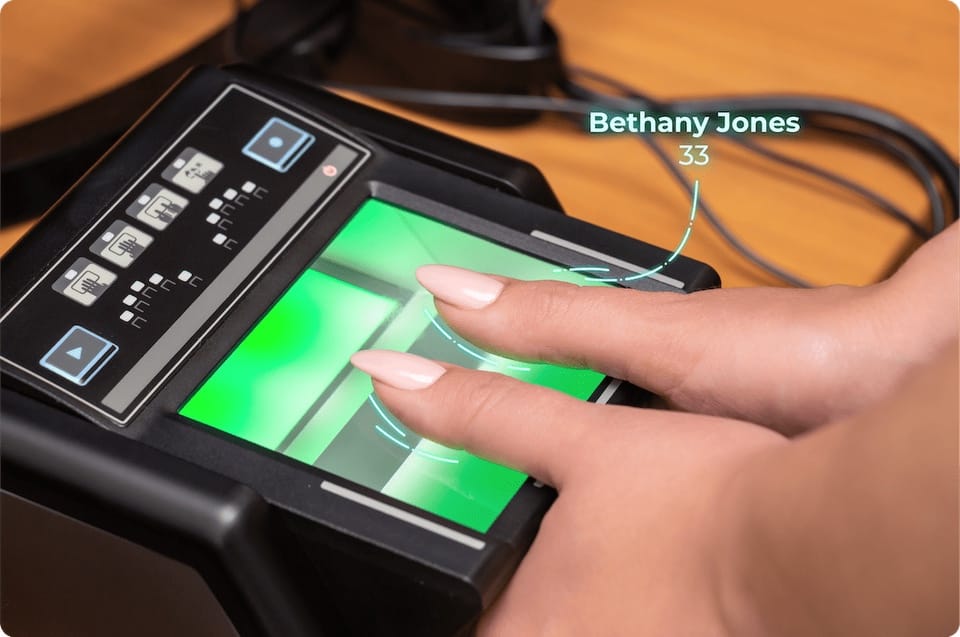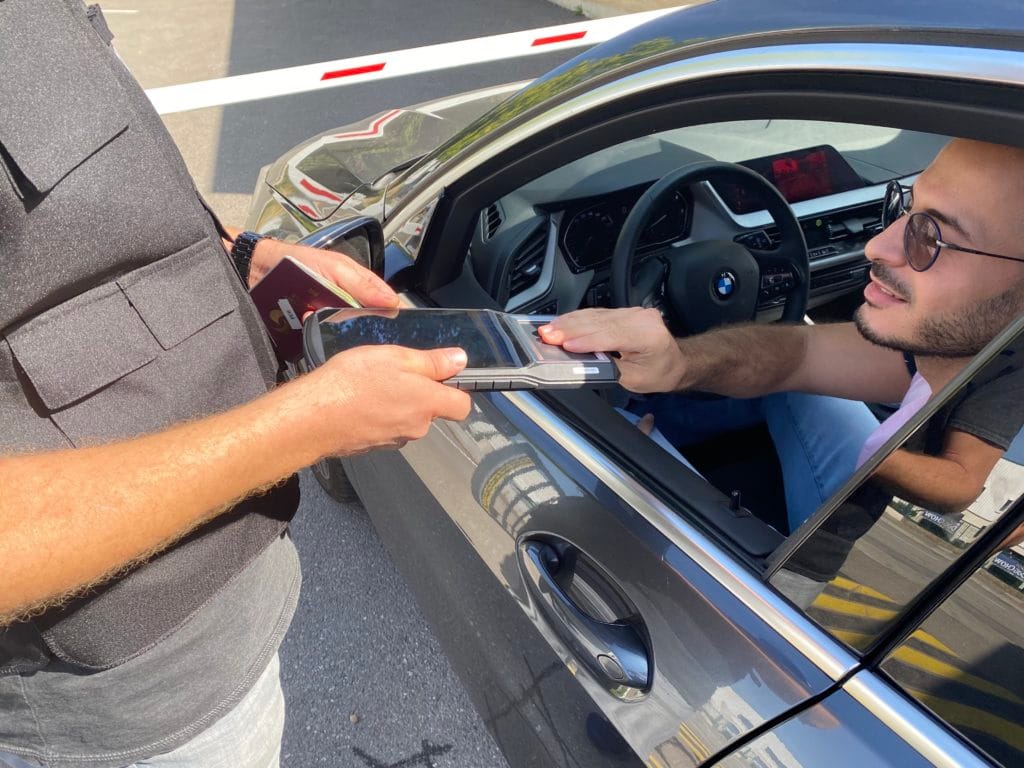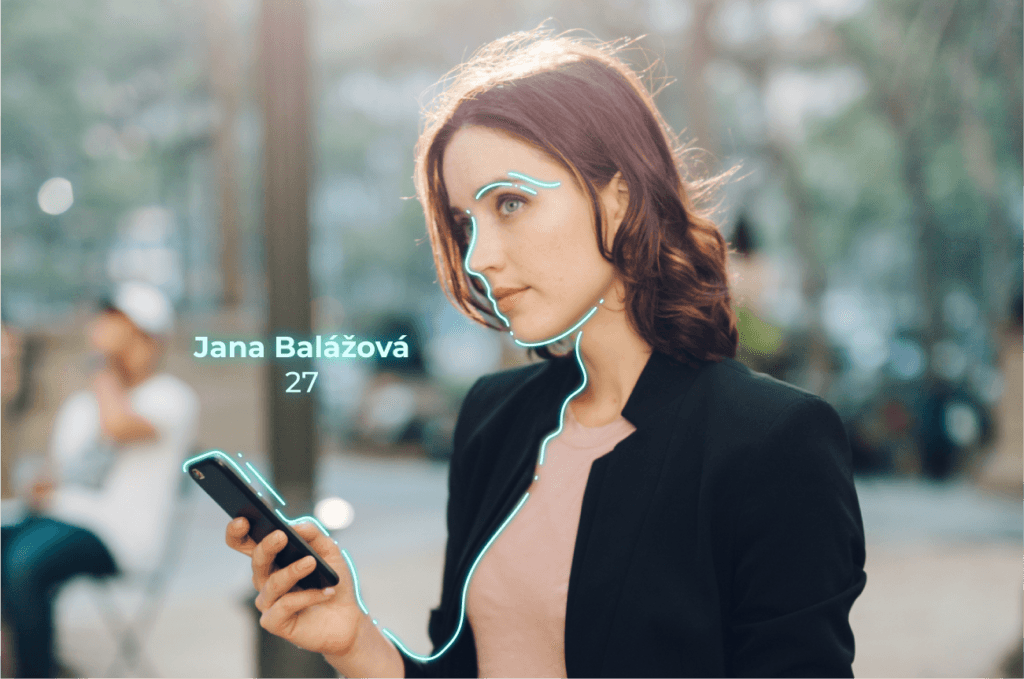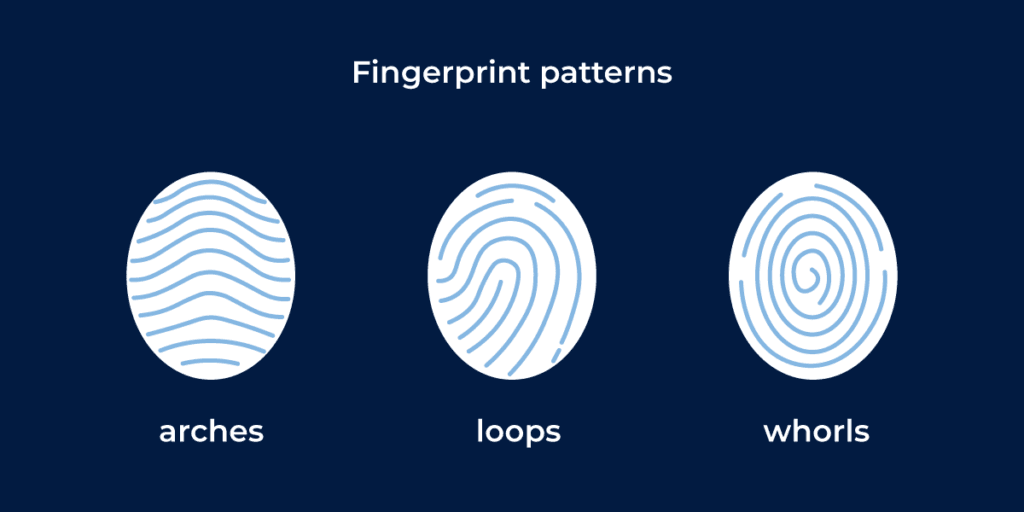Fingerprint Identification definition
Fingerprint identification is a biometric technique that leverages the analysis and comparison of distinct friction ridge patterns on an individual’s fingertips. By utilizing algorithms and mathematical models, this method accurately establishes and verifies the identity of the individual based on their unique fingerprint characteristics.
What Is Fingerprint Identification?
Fingerprint identification is a multifaceted process that involves the analysis, comparison, and interpretation of the unique patterns present on an individual’s fingertips. These patterns, known as fingerprint minutiae, are formed by the raised ridges and furrows on the skin’s surface, creating a distinctive pattern that remains stable throughout a person’s life.
Fingerprint identification is widely utilized in various domains, including forensic science, law enforcement, and biometric authentication systems. Its applications range from criminal investigations and suspect identification to access control and secure identification of individuals in government and banking sectors. Due to the uniqueness and permanence of fingerprints, this method has proven to be a reliable and effective means of establishing personal identity.
How Does Fingerprint Identification Work?
Fingerprint identification has been a crucial tool in forensic science and biometric identification for over a century. By leveraging the unique patterns on an individual’s fingertips, this method accurately establishes personal identity.
Capture an Image
The process begins by capturing an image of an individual’s fingerprints. Specialized devices, such as fingerprint scanners or ink and paper, are used for this purpose. The scanner or ink captures the image of the raised ridges and furrows that create distinct patterns on the skin’s surface. This raw image forms the basis for further analysis.
Enhancement Process
Once the fingerprint image is captured, it undergoes enhancement processes. These techniques aim to improve the clarity and contrast of the ridges, making them more visible and easier to analyze. Enhancement algorithms are applied to optimize the image and ensure that essential details are not lost.
Feature Extraction
In this step, the key features of the fingerprint are identified and extracted from the enhanced image. These features include ridge endings, bifurcations (where ridges split), and ridge crossings. Each person’s fingerprint has a unique combination and arrangement of these features. The extraction process creates a digital representation called a fingerprint template, which serves as a condensed form for subsequent analysis.
Comparison
The fingerprint template obtained from the previous step is then compared to a database of existing fingerprints. This comparison is carried out using advanced algorithms and computational techniques. The algorithms analyze and calculate the similarities and differences between the extracted features in the template and those stored in the database. The goal is to find potential matches that indicate the presence of the same individual in both the captured fingerprint and the database record.
Fingerprint Identification
If a match is found during the comparison process, it indicates a high probability of the same person’s presence in both the captured fingerprint and the database record. Identification is made based on this match. However, it is essential to note that the identification process considers various factors, including image quality, complexity of the pattern, and expertise of the system or personnel involved. Quality control measures and multiple image captures are often employed to ensure accuracy and reliability.


Real-World Implementations of Fingerprint Identification
Fingerprint identification has proven to be a versatile and valuable technology, offering reliable and efficient means of identification in various real-world scenarios. It is widely adopted due to its uniqueness, permanence, and ease of use. Here are some of the key applications:
Law Enforcement and Forensic Investigations
Fingerprint identification plays a crucial role in criminal investigations, enabling law enforcement agencies to link suspects to crime scenes. Fingerprints left behind on surfaces can be collected and compared to a database of known individuals, aiding in identifying perpetrators. This application has been an integral part of forensic science for over a century, helping solve countless cases by providing strong evidence.
Elections
In electoral systems, fingerprints are used to ensure the integrity of the voting process and prevent voter fraud. By linking an individual’s fingerprints to their voter registration, authorities can verify a person’s identity and eligibility to vote. This helps to prevent impersonation, multiple voting, and other forms of electoral malpractice.
Check out our recent published case study on voter registration using accurate algorithms and the world’s fastest ABIS.
Immigration and Border Control
Fingerprint identification is utilized in immigration and border control systems to enhance security and streamline processes. By capturing and comparing fingerprints at border checkpoints, authorities can verify the identity of individuals in real-time and improve border control efficiency.


National ID Systems
Fingerprint identification is widely employed in national identification systems to establish and authenticate an individual’s identity. National ID cards or documents often include biometric data, including fingerprints, to uniquely link an individual to their official identity record. This helps to combat identity theft, track criminal activities, and facilitate secure access to government services.
Financial and Banking Systems
Financial and banking systems increasingly integrate fingerprint identification for secure customer authentication. By linking fingerprints to customer accounts, banks can provide safer transaction authorization and reduce the risk of fraud, protecting sensitive financial information.
According to our case study, 59% of the new bank account were open automatically and remotely which saves customers at least 70% of their time vs physical branch transactions.


Healthcare and Medical Applications
Fingerprint identification has potential applications in healthcare, particularly for patient identification and medical record management. This technology can help eliminate errors related to misidentification, ensuring accurate and secure healthcare service delivery.
Time and Attendance Tracking
Fingerprint identification is employed in workforce management systems to record employee attendance accurately. By using fingerprint scanners, employees can easily clock in and out, preventing time fraud and providing reliable records for payroll and attendance monitoring.
What Are the Three Main Types of Fingerprints?


When it comes to our fingertips, they are no ordinary skin. They are covered with unique patterns of ridges and furrows that form what we call fingerprints. These fingerprints are categorized into three main types: arches, loops, and whorls. Let’s take a closer look at each type.
Arches
Imagine a gentle hillside curve, and you have an idea of what an arch fingerprint looks like. This type is characterized by ridges that start from one side of the finger, rise gracefully in the center, and then slope downward on the other side. Arches are further divided into two subcategories: plain arches and tented arches. Plain arches possess a smooth, continuous curve, while tented arches show a slight spike or tent-like shape in the center.
Loops
Loops are like the swirls of a flowing river. When examining a loop fingerprint, you’ll notice that the ridges enter from one side, create a loop pattern, and exit from the same side they entered. Loops can be further classified as either radial loops or ulnar loops, depending on the side from which the ridges flow. Radial loops flow toward the thumb side of the hand, while ulnar loops flow toward the little finger side.
Whorls
Whorls are like nature’s spirals, captivating and intricate. They are characterized by ridges that create circular or spiral patterns. Whorls have two distinguishing features: the presence of a core or a central point and the existence of at least one ridge that makes a complete circuit. Within the whorl category, there are four subcategories: plain whorls, central pocket loops, double loops, and accidental whorls. Each subcategory has its unique variations of ridge patterns.
Key Categories of Fingerprint Patterns
Fingerprints form tiny maze-like etchings on our fingertips, each bearing its own unique pattern. These patterns fall into seven basic categories, namely:
Plain Arch
Imagine a gentle hillside curve. That’s the essence of a plain arch pattern. The ridges start from one side, rise smoothly at the center, and then slope downwards on the other side. It’s a simple and smooth shape.
Tented Arch
Picture the arch pattern with a slight spike or tent-like shape in the center. This pattern adds a small point to the arch, making it stand out.
Radial Loop
The radial loop is like a whirlpool spinning towards the thumb side of your hand. The ridges enter from one side, create a loop pattern, and exit towards the thumb.
Ulnar Loop
In contrast to the radial loop, the ulnar loop flows towards the little finger side of your hand. The ridges enter from one side, create a loop, and exit towards the little finger. It’s a gentle flow towards the outer edge of your hand.
Plain Whorl
Imagine a spiral or a circle. This pattern is formed by ridges that create a circular or spiral shape. It’s like a mini maze on your fingertip.
Central Pocket Loop
Within a loop pattern, there’s a little pocket or indentation. This is called a central pocket loop. It looks like a loop with a secret pocket in the middle.
Double Loop
This pattern is formed by two loops coming together. It’s like two rivers merging into one. The loops flow separately and then join, creating a unique pattern.
How Long Can Fingerprint Last?
Fingerprints can last a very long time. In fact, under ideal conditions, fingerprints can last for many years or even decades. The durability of fingerprints depends on various factors such as the surface they are deposited on, the environmental conditions, and the method used for preservation.
On smooth surfaces like glass or metal, fingerprints can remain intact for a relatively longer period. They are less likely to be affected by external elements such as dust or moisture. Porous surfaces, like paper or fabric, may pose more challenges in preserving fingerprints, as they can be easily smudged or distorted.
Key Benefits of Fingerprint Identification
The reliability of fingerprints in identification is exceptional. The unique patterns formed by ridges and furrows on our fingertips make each person’s fingerprints distinct from others. Even identical twins, who share the same DNA, have different fingerprints. This individuality is what makes fingerprints such a powerful tool for identification.
When fingerprints are properly collected and analyzed by trained experts, their reliability is extremely high. The level of detail captured in a fingerprint, including ridge characteristics and minutiae points, ensures accuracy in matching and distinguishing one person from another.
Unlike other forms of identification, such as ID cards or passwords, fingerprints cannot be lost, forgotten, or easily stolen. They are an inherent part of our biology and remain consistent over time. This permanence ensures long-term reliability in identification.
Fingerprint identification is a fast and efficient process. Modern fingerprint recognition systems can quickly compare a captured fingerprint with a large database, allowing for rapid identification and verification. This efficiency is particularly useful in areas such as law enforcement, border control, or access control systems.
Fingerprint identification systems can be integrated with various technologies and applications, including smartphones, laptops, and secure access control systems. This makes fingerprint identification convenient and user-friendly, allowing for seamless integration into various areas of our daily lives.